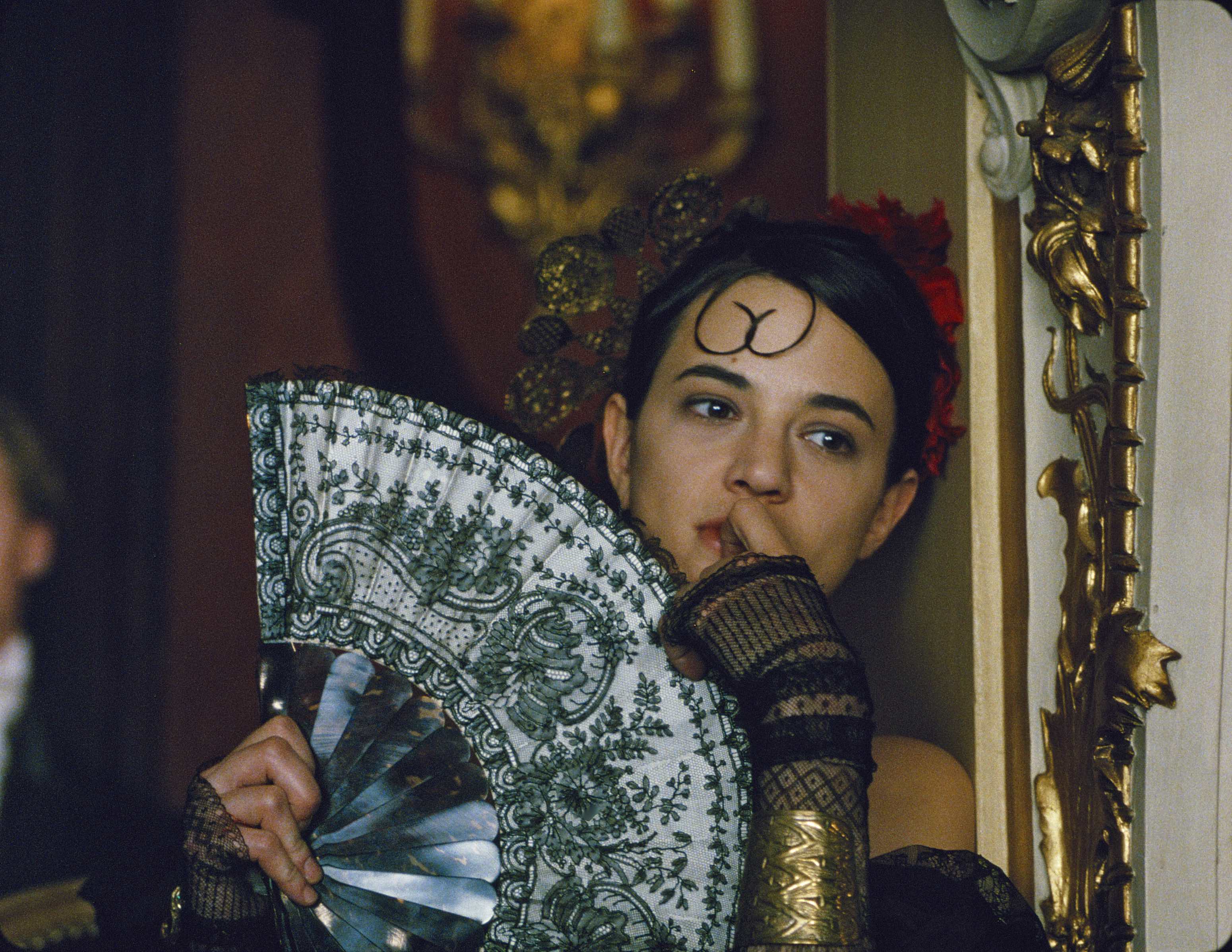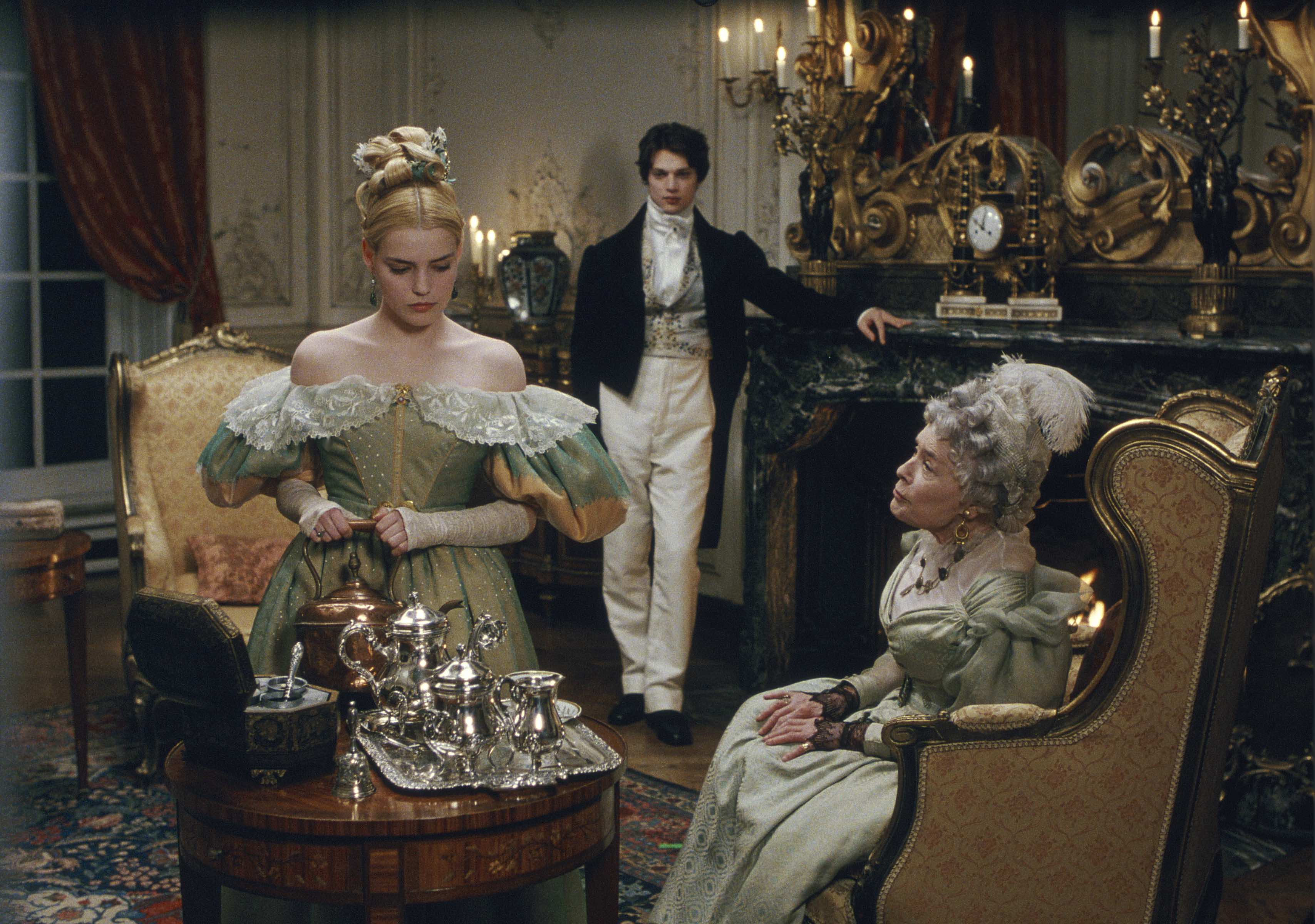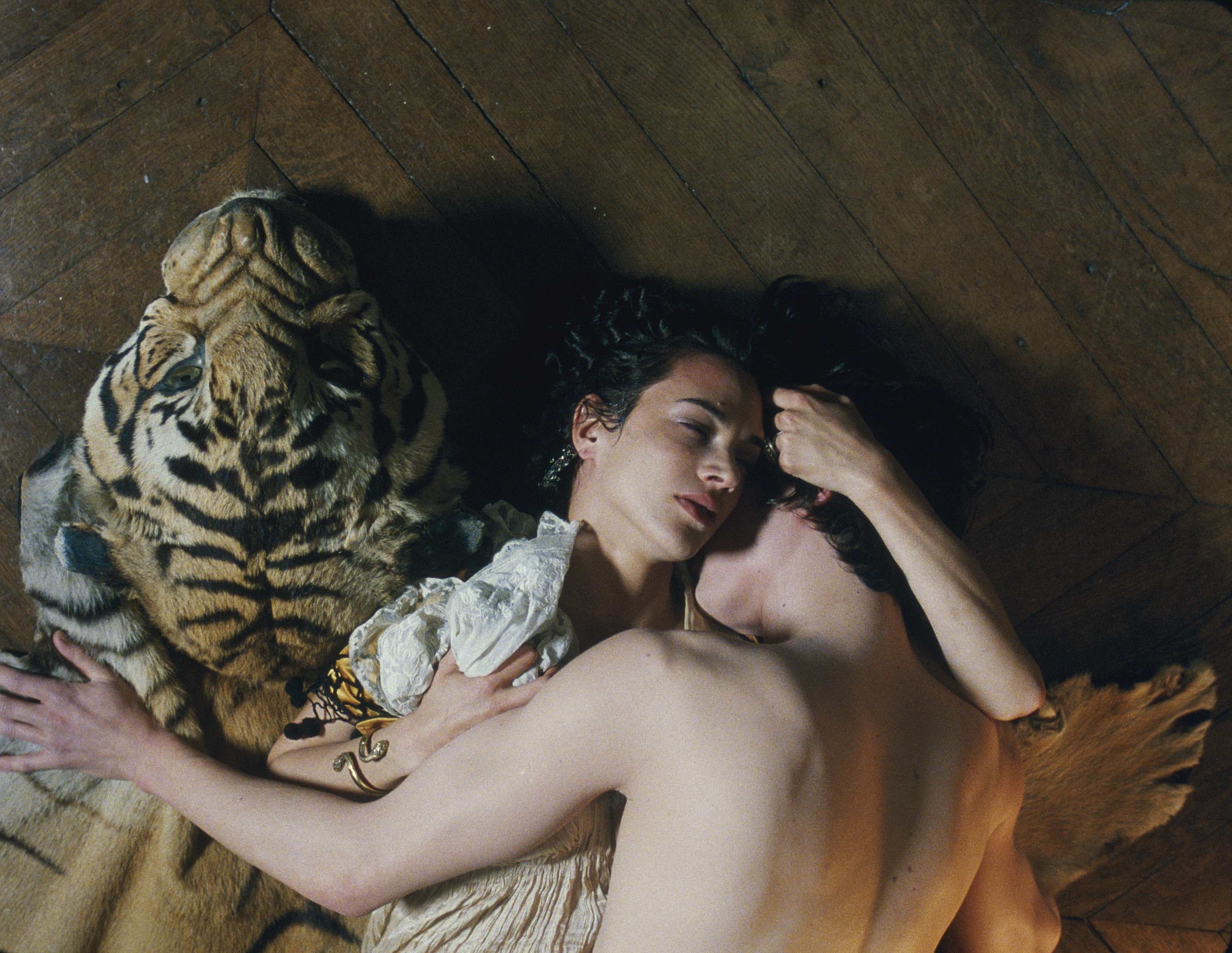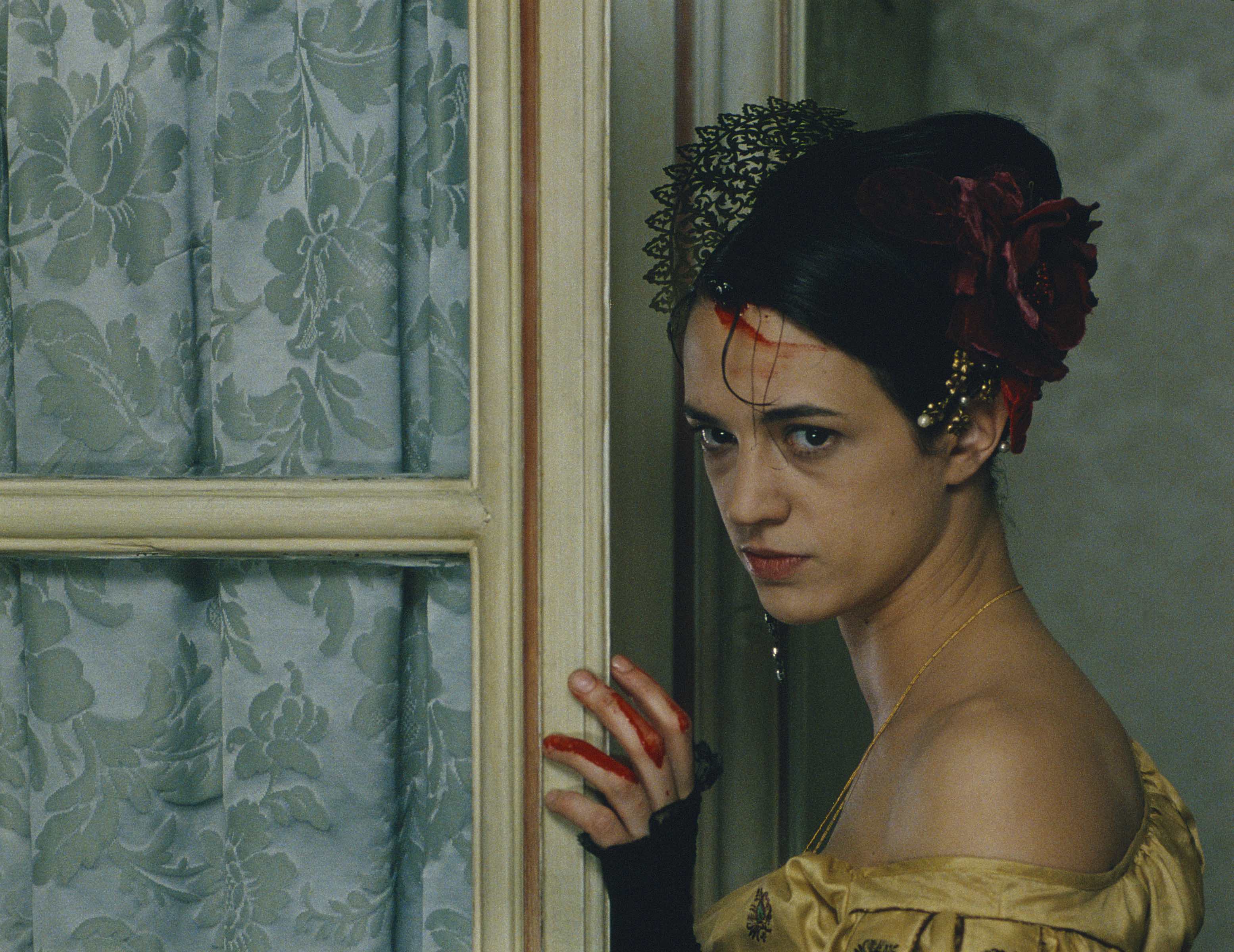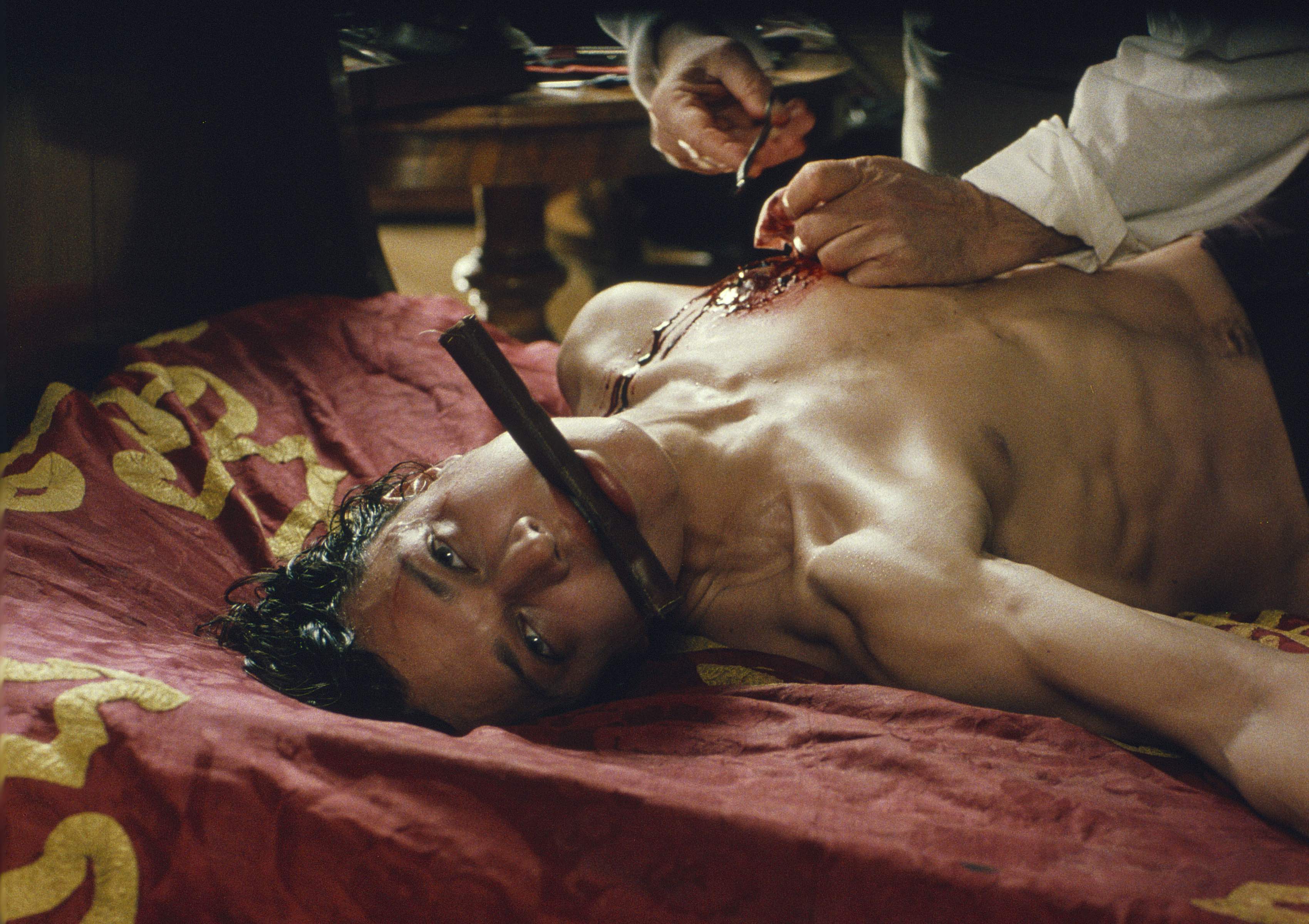50 years after Choderlos de Laclos, the Marquess of Flers, decides to marry is grand daughter, jewels of French aristocracy, to Ryno de Marigny, a sort of romantic Valmont.
But a thing remains hidden : this Don Juan, unrepentant, is the ten-year lover and the victim of a scandalous courtezan, daughter of a duchess and bullfighter.
REVUE DE PRESSE
sadiemagazine.com
The last mistress - sadiemagazine.com by Kevin Cooke-736
In Catherine Breillat’s The Last Mistress, bleeding is love, both carnal and pure, cutting skin and stigma. It transcends any […]
Note d'intention de Catherine Breillat concernant Une Vieille Maîtresse-709
I read An Old Mistress late, just five or six years ago. The novel gripped me immediately. Beyond the fanciful, […]
sadiemagazine.com
Click to Close adapted from the novel by Jules Amedee Barbey d'Aurevilly, are only virginal in one respect, to be revealed and remembered in the perfection of blood red.
Breillat has previously explored myriad forms of sexual violence: deviant, celebrated, and sometimes the combination of the two. The Last Mistress is a new chapter in this inspection, taking cues from her previous films Romance and Fat Girl. She also revisits expectations, utilizing a magician-like ability to create illusions despite the viewer’s “I’m not gonna get screwed by Breillat this time!” persistence. But pulling the carpet from under your feet goes beyond mere gimmickry in The Last Mistress. The film weaves a familiar story of infidelity on the surface, yet preys on our own passing judgments on the quality of love of friends and strangers, when we convince ourselves ignorance is intuition.
The story begins and ends, without spoiling anything, with two elder nineteenth century aristocratic French gossipers, pondering a relationship of young lovers with the frenzied lack of consciousness of an Us Weekly magazine. In fairness, the assessment is plausible with only mildly interested eyes. Ryno, a Parisian playboy on the cusp of a marriage to a society sweetheart, does a bad job having a quiet affair with a tempestuous Spanish woman ten years his senior. He seemingly uses her and perhaps all women but pledges to “make the straight play” for his new girl wonder, similar to R&B ballads of usually self-proclaimed players. Yet in flashbacks, not surprisingly, a more nuanced truth is revealed. Ryno, (well played by Fu’ad Ait Aattou, overcoming his runway looks) had started as a fed up French gigolo. When sleeping with well-to-do married women bores him, he is temporarily lost before encountering Vellini, the untamed fire of a woman who is branded into his subconscious, a creature of animalistic proportion and honesty that, once discovered, he would fail to dispossess.
Vellini is played to perfection by the actress Asia Argento, daughter of Italian horror master, Dario Argento, and perhaps Catherine Breillat’s new muse. There appears to be an ideal synchronicity to the actress and director, as if they may have been finishing each other’s thoughts on opposite sides of the lens. Argento’s impassioned rawness has been in the works for years now, from horror in the tradition of her father, like Land of The Dead, to the misbegotten, The Heart is Deceitful Beyond All Things. But never has a director honed that primitive energy into a performance of fine distinction until Breillat honed it in The Last Mistress. As Ryno falls in love with such an unlikely heroine/femme fatale, so do the camera, and eventually the viewer. The relationship ebbs and flows behind the weight of its colossal craze, so primordial as to trump convention, and possibly its ability to exist.
Breillat continues to avoid being lumped into the current French “mini-new wave,” with its Polanski obsessions so embodied in the overrated films of Francois Ozon. She maintains her own place among the top filmmakers of today, not emboldened by scene or association. At the heart of her talent is her simple ability to tell a story with such deftness that it can result in a sort of surrendered hypnosis, leaving a viewer willfully vulnerable and manipulated, guided only by the trust that something can actually be learned through this capitulation, a rarity in modern cinema.
The Last Mistress ends with the futures of the lovers indeterminate. The bond always soaring or burning, but never steady. Yet the mystery is why, through all the tumult, the characters are to be envied.
http://sadiemagazine.com/index.php?option=com_content&task=view&id=213&Itemid=51
The last mistress - sadiemagazine.com by Kevin Cooke-736
In Catherine Breillat’s The Last Mistress, bleeding is love, both carnal and pure, cutting skin and stigma. It transcends any societal scruples, any better judgment, leaving bare the maidenly point where love and lust quit their fight and unite. The lovers in this story,Click to Close adapted from the novel by Jules Amedee Barbey d'Aurevilly, are only virginal in one respect, to be revealed and remembered in the perfection of blood red.
Breillat has previously explored myriad forms of sexual violence: deviant, celebrated, and sometimes the combination of the two. The Last Mistress is a new chapter in this inspection, taking cues from her previous films Romance and Fat Girl. She also revisits expectations, utilizing a magician-like ability to create illusions despite the viewer’s “I’m not gonna get screwed by Breillat this time!” persistence. But pulling the carpet from under your feet goes beyond mere gimmickry in The Last Mistress. The film weaves a familiar story of infidelity on the surface, yet preys on our own passing judgments on the quality of love of friends and strangers, when we convince ourselves ignorance is intuition.
The story begins and ends, without spoiling anything, with two elder nineteenth century aristocratic French gossipers, pondering a relationship of young lovers with the frenzied lack of consciousness of an Us Weekly magazine. In fairness, the assessment is plausible with only mildly interested eyes. Ryno, a Parisian playboy on the cusp of a marriage to a society sweetheart, does a bad job having a quiet affair with a tempestuous Spanish woman ten years his senior. He seemingly uses her and perhaps all women but pledges to “make the straight play” for his new girl wonder, similar to R&B ballads of usually self-proclaimed players. Yet in flashbacks, not surprisingly, a more nuanced truth is revealed. Ryno, (well played by Fu’ad Ait Aattou, overcoming his runway looks) had started as a fed up French gigolo. When sleeping with well-to-do married women bores him, he is temporarily lost before encountering Vellini, the untamed fire of a woman who is branded into his subconscious, a creature of animalistic proportion and honesty that, once discovered, he would fail to dispossess.
Vellini is played to perfection by the actress Asia Argento, daughter of Italian horror master, Dario Argento, and perhaps Catherine Breillat’s new muse. There appears to be an ideal synchronicity to the actress and director, as if they may have been finishing each other’s thoughts on opposite sides of the lens. Argento’s impassioned rawness has been in the works for years now, from horror in the tradition of her father, like Land of The Dead, to the misbegotten, The Heart is Deceitful Beyond All Things. But never has a director honed that primitive energy into a performance of fine distinction until Breillat honed it in The Last Mistress. As Ryno falls in love with such an unlikely heroine/femme fatale, so do the camera, and eventually the viewer. The relationship ebbs and flows behind the weight of its colossal craze, so primordial as to trump convention, and possibly its ability to exist.
Breillat continues to avoid being lumped into the current French “mini-new wave,” with its Polanski obsessions so embodied in the overrated films of Francois Ozon. She maintains her own place among the top filmmakers of today, not emboldened by scene or association. At the heart of her talent is her simple ability to tell a story with such deftness that it can result in a sort of surrendered hypnosis, leaving a viewer willfully vulnerable and manipulated, guided only by the trust that something can actually be learned through this capitulation, a rarity in modern cinema.
The Last Mistress ends with the futures of the lovers indeterminate. The bond always soaring or burning, but never steady. Yet the mystery is why, through all the tumult, the characters are to be envied.
http://sadiemagazine.com/index.php?option=com_content&task=view&id=213&Itemid=51
Note d'intention de Catherine Breillat concernant Une Vieille Maîtresse-709
I read An Old Mistress late, just five or six years ago.
The novel gripped me immediately. Beyond the fanciful, romantic tone, there was a sense of raw emotional truth, an analysis of passion in all its irrationality and a delectation in its intoxicating dizziness that, instead of fleeing it, made you want to be swallowed up by it.
Barbey d'Aurévilly made no secret of the fact that the novel drew heavily on personal experience and that the character of Vellini was inspired by a singular, fatal liaison. Of the kind you don't admit to and which is flaunted here with a sincere shamelessness that brought obloquy and scandal at the time.
Sincere shamelessness to which I also profess and which, over the century that separates us, seems twinned with, resonant of, that of Barbey d'Aurévilly.
Having never tasted until now any particular desire to make a literary adaptation, I like to think that if I had lived at the same time, I would have resembled Barbey d'Aurévilly. I identify with his novel. It gradually took possession of me like a second me, which might providentially provide the fanciful dimension that I don't have and which is so necessary for what I aspire to: making sophisticated, popular movies.
An Old Mistress is "a popular novel with complex characters", in which the leads are ecstatically pure, almost chimerical in black or white.
The disrepute in which Vellini wallows, and Ryno with her, stems surely from the same soulful arrogance as Hermangarde's self-imposed fortitude. This contrasting imagery takes us a hair's breadth from the popular novel (and film, therefore).
Hermangarde is a sort of Isolde with a face as pristine as her hair. Pure and transparent like a blue diamond. The absolute limpidity of the eyelids, the eyebrows tinged with silky lashes, the full, crimson lips: she possesses the marks of the end of childhood that one detects in Renaissance paintings of any young woman and of men aged around fourteen or fifteen.
Ryno de Marigny is a young man over-endowed in good looks and, therefore, weak. Like a girl. Cowardly and sublime in passion.
Even if we accord him diabolical powers: all woman are ready to risk damnation for him, or for his image -- the beauty, the grace, which Vellini cannot claim to possess but of which she has the power. Whereas Ryno has it but carries it like a burden.
As for the Marquise de Flers, she is the only woman Ryno can allow himself to love sincerely. The age barrier forbids all mundane or vulgar emotion of the senses while, for the same reasons, she can believe herself safe from the dangerous sedition of love and desire.
For, as always, it is here a question of guilt. In the storm of passions, each person believes their honour depends on remaining captain of their ship. And it is that -- this senseless pride, this refusal to recognize love for what it is, calling it instead desire, and this fear of being enslaved in its yoke -- which sends the vessel onto the rocks.
Just as Valmont in Dangerous Liaisons, which La Marquise de Flers quotes, admires and apprehends.
Whereas Vellini, the only exemplary character in her passion, knows full well what it is all about; love is a hellish bog that, if you're not too scared to get your hands dirty or even to wallow in it completely, soothes burns at the same time as it feeds the fires.
The filter of the period and the desertion of the Romantic author, for whom there is no happy medium between sylph and whore, for whom women are made either for heaven or hell (and subject to the same glorification in either case), are for me new and vital tests.
Nonetheless, I have no desire to reconstitute the period. What fascinates me here is the modernity, the implacable vivisection of the impulse of passion.
The period is a necessary frame for this modernity because emotions only claim an eternal function in our present imagination if we leave them there… leave them there to wander freely, I would say.
In this novel (and the same will be true of the film), there is no room for preoccupations other than these singularly dangerous liaisons that La Marquise de Flers invokes so frequently, taking refuge behind Choderlos de Laclos by claiming him for her century (which is to say still in the present) with total disregard for historical truth which drives a century (even if it is only half of one) between them.
And all this takes place in the Saint-Germain neighbourhood that gave rise to the French outlook inherent to this analysis of the sentiments, which from Marivaux leads to Rohmer and even Sagan… The Paris of soberly elegant mansion houses with gilt wood trims, French art in all its splendour, but also a Paris that so easily resembled a village with its low stone buildings, random spaces overrun by vegetation, and bygone trades: knife-grinders, water distributors…
I believe that the location is there to allow poetry to emerge, as in a particularly frenetic musical score where quavers and demisemiquavers climax at breakneck speed to the rhythm of dialogue with dense, scathing, literary circumlocutions.
I enjoy these endless jousts, where truths clash in order to conceal another, more intimate truth, the one people refuse to see and that the cinema, that unrelenting microscope, pinpoints so well.
It hardly needs saying, therefore, that the microscope is the close up, the inquisition at the heart of the characters' most intimate being, the quest for desertions and passion, renunciations and exaltation. For, when souls and faces are laid bare, the period doesn't matter, we are all the same: prey to our fantasies.
In An Old Mistress, I wish to exalt the singularly anodyne implication of the title in which the indefinite article accords importance to that which usually has none: not the age of the mistress but the durability, perpetuation, of the emotion. "This burning urge that has become chronic without ceasing to be acute" and which is perhaps (according to Barbey himself) the best definition we might give of love.
An Old Mistress is the parable of an affair that seems to be over and whose force is underestimated because it is thought to have blown itself out, when in fact it is just a momentarily dormant volcano.
Finding the modernity of the novel also involves purifying, understanding the metaphors and paraphrases made necessary by the drastic censorship of the period.
Thus, in a process of rewriting or reinterpretation, I think I will purge almost totally from the script the (old-fashioned and slightly conventional) myth of the "pact signed in blood". This may be a necessary expression of their passion, but it does not seal the fate of Ryno and Vellini.
It strikes me as more important to see (like a brief shaft of light in a period soon to be darkened by the revolution and the growth in influence of the irremediably strait-laced bourgeoisie -- here, women's dresses are daringly low-cut according to the romantic norms of The Leopard) -- it is more important to see, therefore, the dogmatic beauty of an iconic virgin, a resolutely untainted woman idealistically dissembling her emotions and repressing her desires, the representation of the "ideal fiancée", therefore, clashing with the "sovereign woman", the Amazon who takes what she desires and whose declared desires are beauty, this beauty that provokes such indignation in this world where people condemn, under the name of "ugliness", a woman's assertion of her liberty, her evident sensuality and the power that this gives her over men.
When the seductress takes on even the most formidable seducer, it is the woman who wins.
A lost woman, without social status, with no future and without any particular beauty even: yet she wins for she is the very image of the femme fatale, this cinematic myth that hides one of the great issues of our time:
Sexuality versus propriety. That is a duel that fascinates me and I want to penetrate its flesh.
The novel gripped me immediately. Beyond the fanciful, romantic tone, there was a sense of raw emotional truth, an analysis of passion in all its irrationality and a delectation in its intoxicating dizziness that, instead of fleeing it, made you want to be swallowed up by it.
Barbey d'Aurévilly made no secret of the fact that the novel drew heavily on personal experience and that the character of Vellini was inspired by a singular, fatal liaison. Of the kind you don't admit to and which is flaunted here with a sincere shamelessness that brought obloquy and scandal at the time.
Sincere shamelessness to which I also profess and which, over the century that separates us, seems twinned with, resonant of, that of Barbey d'Aurévilly.
Having never tasted until now any particular desire to make a literary adaptation, I like to think that if I had lived at the same time, I would have resembled Barbey d'Aurévilly. I identify with his novel. It gradually took possession of me like a second me, which might providentially provide the fanciful dimension that I don't have and which is so necessary for what I aspire to: making sophisticated, popular movies.
An Old Mistress is "a popular novel with complex characters", in which the leads are ecstatically pure, almost chimerical in black or white.
The disrepute in which Vellini wallows, and Ryno with her, stems surely from the same soulful arrogance as Hermangarde's self-imposed fortitude. This contrasting imagery takes us a hair's breadth from the popular novel (and film, therefore).
Hermangarde is a sort of Isolde with a face as pristine as her hair. Pure and transparent like a blue diamond. The absolute limpidity of the eyelids, the eyebrows tinged with silky lashes, the full, crimson lips: she possesses the marks of the end of childhood that one detects in Renaissance paintings of any young woman and of men aged around fourteen or fifteen.
Ryno de Marigny is a young man over-endowed in good looks and, therefore, weak. Like a girl. Cowardly and sublime in passion.
Even if we accord him diabolical powers: all woman are ready to risk damnation for him, or for his image -- the beauty, the grace, which Vellini cannot claim to possess but of which she has the power. Whereas Ryno has it but carries it like a burden.
As for the Marquise de Flers, she is the only woman Ryno can allow himself to love sincerely. The age barrier forbids all mundane or vulgar emotion of the senses while, for the same reasons, she can believe herself safe from the dangerous sedition of love and desire.
For, as always, it is here a question of guilt. In the storm of passions, each person believes their honour depends on remaining captain of their ship. And it is that -- this senseless pride, this refusal to recognize love for what it is, calling it instead desire, and this fear of being enslaved in its yoke -- which sends the vessel onto the rocks.
Just as Valmont in Dangerous Liaisons, which La Marquise de Flers quotes, admires and apprehends.
Whereas Vellini, the only exemplary character in her passion, knows full well what it is all about; love is a hellish bog that, if you're not too scared to get your hands dirty or even to wallow in it completely, soothes burns at the same time as it feeds the fires.
The filter of the period and the desertion of the Romantic author, for whom there is no happy medium between sylph and whore, for whom women are made either for heaven or hell (and subject to the same glorification in either case), are for me new and vital tests.
Nonetheless, I have no desire to reconstitute the period. What fascinates me here is the modernity, the implacable vivisection of the impulse of passion.
The period is a necessary frame for this modernity because emotions only claim an eternal function in our present imagination if we leave them there… leave them there to wander freely, I would say.
In this novel (and the same will be true of the film), there is no room for preoccupations other than these singularly dangerous liaisons that La Marquise de Flers invokes so frequently, taking refuge behind Choderlos de Laclos by claiming him for her century (which is to say still in the present) with total disregard for historical truth which drives a century (even if it is only half of one) between them.
And all this takes place in the Saint-Germain neighbourhood that gave rise to the French outlook inherent to this analysis of the sentiments, which from Marivaux leads to Rohmer and even Sagan… The Paris of soberly elegant mansion houses with gilt wood trims, French art in all its splendour, but also a Paris that so easily resembled a village with its low stone buildings, random spaces overrun by vegetation, and bygone trades: knife-grinders, water distributors…
I believe that the location is there to allow poetry to emerge, as in a particularly frenetic musical score where quavers and demisemiquavers climax at breakneck speed to the rhythm of dialogue with dense, scathing, literary circumlocutions.
I enjoy these endless jousts, where truths clash in order to conceal another, more intimate truth, the one people refuse to see and that the cinema, that unrelenting microscope, pinpoints so well.
It hardly needs saying, therefore, that the microscope is the close up, the inquisition at the heart of the characters' most intimate being, the quest for desertions and passion, renunciations and exaltation. For, when souls and faces are laid bare, the period doesn't matter, we are all the same: prey to our fantasies.
In An Old Mistress, I wish to exalt the singularly anodyne implication of the title in which the indefinite article accords importance to that which usually has none: not the age of the mistress but the durability, perpetuation, of the emotion. "This burning urge that has become chronic without ceasing to be acute" and which is perhaps (according to Barbey himself) the best definition we might give of love.
An Old Mistress is the parable of an affair that seems to be over and whose force is underestimated because it is thought to have blown itself out, when in fact it is just a momentarily dormant volcano.
Finding the modernity of the novel also involves purifying, understanding the metaphors and paraphrases made necessary by the drastic censorship of the period.
Thus, in a process of rewriting or reinterpretation, I think I will purge almost totally from the script the (old-fashioned and slightly conventional) myth of the "pact signed in blood". This may be a necessary expression of their passion, but it does not seal the fate of Ryno and Vellini.
It strikes me as more important to see (like a brief shaft of light in a period soon to be darkened by the revolution and the growth in influence of the irremediably strait-laced bourgeoisie -- here, women's dresses are daringly low-cut according to the romantic norms of The Leopard) -- it is more important to see, therefore, the dogmatic beauty of an iconic virgin, a resolutely untainted woman idealistically dissembling her emotions and repressing her desires, the representation of the "ideal fiancée", therefore, clashing with the "sovereign woman", the Amazon who takes what she desires and whose declared desires are beauty, this beauty that provokes such indignation in this world where people condemn, under the name of "ugliness", a woman's assertion of her liberty, her evident sensuality and the power that this gives her over men.
When the seductress takes on even the most formidable seducer, it is the woman who wins.
A lost woman, without social status, with no future and without any particular beauty even: yet she wins for she is the very image of the femme fatale, this cinematic myth that hides one of the great issues of our time:
Sexuality versus propriety. That is a duel that fascinates me and I want to penetrate its flesh.




